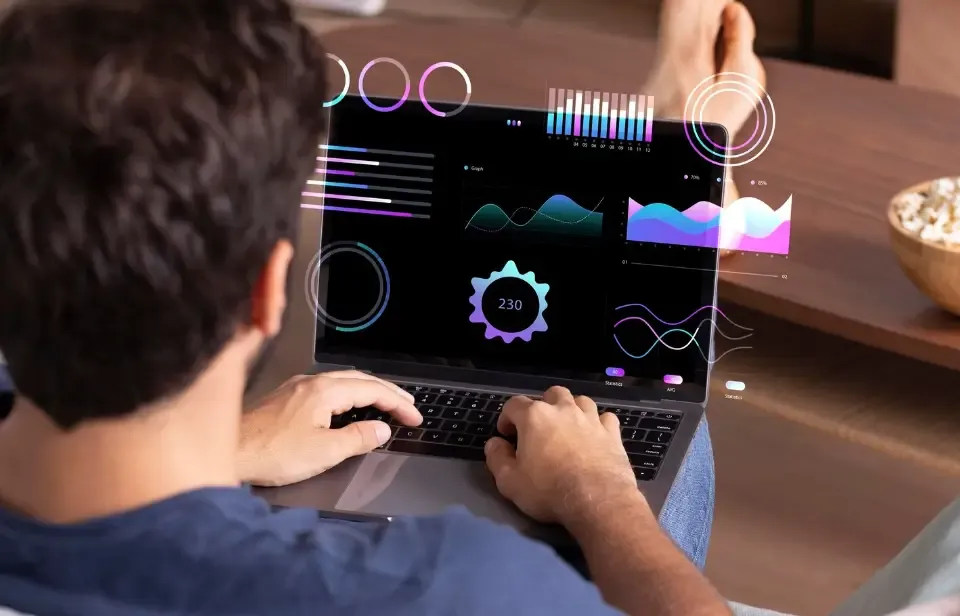User-Agent Parsing for Beginners: How to Parse Browser and Device Information
How to determine whether the visitor to your page is using a computer, a mobile device, or a crawler? Many people have heard of User-Agent parsing, but not many can truly understand that string of "dense characters."
The more critical question is what the relationship is between it and the browser fingerprinting that is often mentioned now. Does the existence of browser fingerprints mean that the User-Agent can be completely ignored?
Next, let's have the editor explain what User-Agent is all about and how to use User-Agent to parse and identify browser and device information.

1. What is User-Agent?
In simple terms, User-Agent (abbreviated as UA) is a string of "manual" that the browser automatically sends when accessing a website.
This string contains some key information about the visitor, such as:
Which browser to use (Chrome? Safari? Firefox?)
Which operating system do you use (Windows? macOS? Android? iOS?)
Browser version number
Device type (PC? Mobile? Tablet?)
Sometimes it also includes rendering engine information (such as Gecko, Blink).
A sentence summary: User-Agent is like an "ID card + device business card."
Two,User-Agent AnalysisWhat exactly is being recognized?
We typically extract several key fields from the UA, a process known as User-Agent parsing. Common parsing content includes:
1. Browser type and version number
Such as: Chrome, Edge, Safari, Firefox
Purpose: To perform compatibility checks and analyze user browser distribution.
2. Operating System Information
For example: Windows 10, Android 13, iOS 17
Usage: For mobile adaptation and technical tracking analysis.
3. Device Type Identification
For example: iPhone, Samsung, Huawei, Dell PC
Purpose: Display different interfaces and determine traffic from mobile and PC ends.
4. Rendering Engine
For example: WebKit, Blink, Gecko
Purpose: Troubleshoot front-end rendering difference issues.
For example: User-Agent parsing is like unpacking a courier label, reading information such as the sender, address, and courier company.
3. Why is User-Agent parsing still needed now?
Many people might ask: "Isn't browser fingerprinting the norm now? Is UA outdated?"
The answer is—it's not outdated, just has limited functionality.
User-Agent is still sufficient in many basic scenarios.
Then when will UA no longer be enough?
I want to accurately identify a specific device, rather than a class of devices.
Want to distinguish between bots and real users.
Want to detect forged or modified UA.
Want to delve into the judgment of environment variables, anti-brushing, and anti-cheating.
At this point, more advanced techniques are needed. For example: browser fingerprinting.
It will combine multiple dimensions to form a more stable "environment feature set," such as screen resolution, font list, WebGL information, and so on.
ToDetect browser fingerprint detection
This is a relatively common type of testing scheme used to verify:
Is UA simulated?
Does the terminal really exist?
Is the fingerprint information consistent?
It can be understood as:
User-Agent is surface information, while ToDetect browser fingerprint recognition is deep verification.
Four, how to proceed.Browser User-Agent Parsing? (Even beginners can learn)
1. Use ready-made online tools (the easiest)
Searching for "User-Agent parsing online tool" will yield many results, no coding required.
2. Use JavaScript to get UA (frontend)
3. Server-side parsing (Node / Python / PHP, etc.)
Node.js example:
After parsing, a structured object will be obtained, such as:
5. User-Agent + Browser Fingerprinting is the most reliable combination method now.
To be frank, relying solely on UA is no longer sufficient:
| Technology | Advantages | Disadvantages |
|---|---|---|
| User-Agent | Simple, fast, and compatible. | Easily modified |
| Browser fingerprint recognition | High accuracy, difficult to forge. | Some environments can be interfered with. |
| ToDetect fingerprint detection | Can determine whether it is a simulated device and whether SDK is needed. | Need third-party support. |
Only by combining them can we achieve both speed and accuracy.
Finally, let me say one thing.
Although User-Agent is an old technology, it is still an indispensable foundation in the device identification system.
When you combine UA parsing with browser fingerprinting, ToDetect, and other technologies, you can build a more complete, stable, and reliable identification solution.
 AD
AD Browser Engine Detection + User-Agent Analysis: Easily Identify Browser Type and Version
Browser Engine Detection + User-Agent Analysis: Easily Identify Browser Type and Version User-Agent Parsing for Beginners: How to Parse Browser and Device Information
User-Agent Parsing for Beginners: How to Parse Browser and Device Information Best User-Agent Parsing Tools: Practical Comparison & Guide
Best User-Agent Parsing Tools: Practical Comparison & Guide MostLogin Free Anti-Detection Browser Features and Pricing
MostLogin Free Anti-Detection Browser Features and Pricing Why Your Facebook Accounts Keep Getting Banned: The Real Reasons Behind Multi-Account Linking
Why Your Facebook Accounts Keep Getting Banned: The Real Reasons Behind Multi-Account Linking 2025 TikTok and Instagram Full-Funnel E-commerce Strategies
2025 TikTok and Instagram Full-Funnel E-commerce Strategies